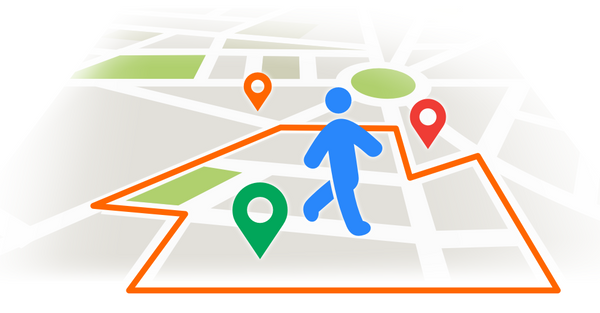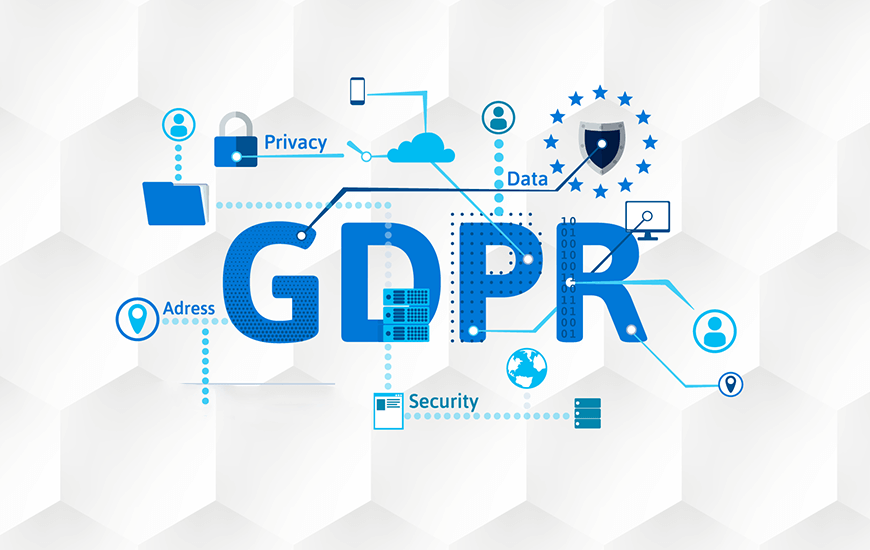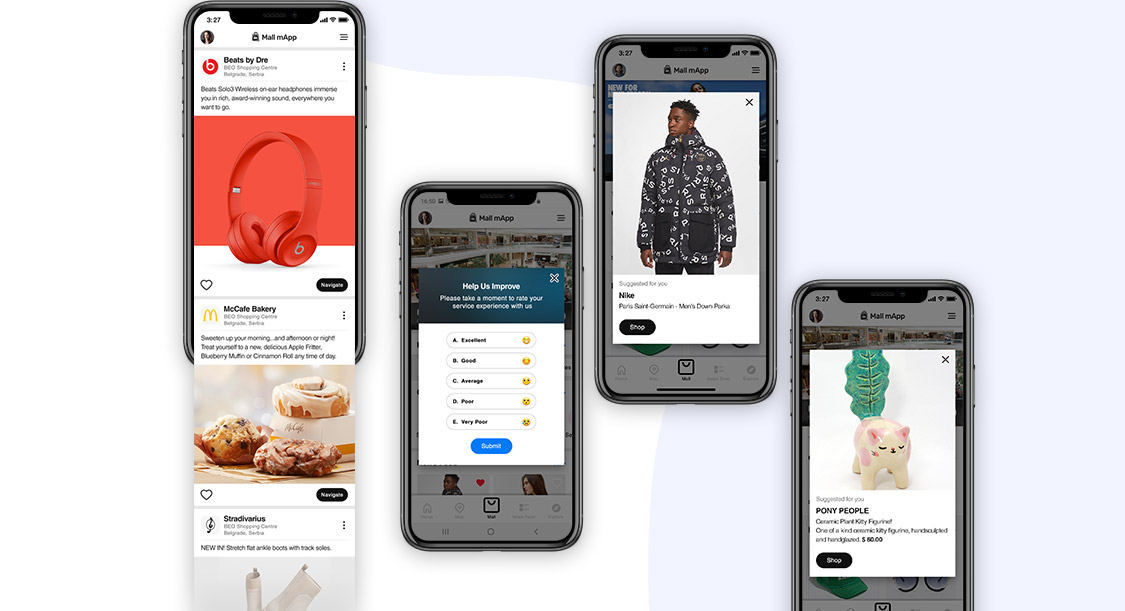
Unlocking the Power of Social Media for BLead Generation
October 6, 2023
Signs You Should Invest in Chatbots And Virtual Assistants In AI Marketing
October 9, 2023In today’s fast-paced digital landscape, businesses are constantly searching for innovative ways to reach their target audience with precision. One of the most potent tools in the marketing arsenal is location-based targeting powered by Artificial Intelligence (AI). This strategy not only allows businesses to connect with their audience at the right place and time but also maximizes the efficiency of their marketing efforts. In this comprehensive blog post, we will delve deep into the world of location-based targeting with AI. From understanding the basics to implementing advanced strategies, we’ve got you covered. So, let’s embark on this journey to unlock the power of precision in AI marketing!

Understanding Location-Based Targeting
What is Location-Based Targeting?
Location-Based Targeting (LBT) is a marketing strategy that harnesses the geographical location of users’ devices to deliver personalized content, advertisements, or promotions. It’s a strategic approach that ensures businesses reach their target audience precisely when and where it matters the most.
In essence, LBT allows businesses to break free from the constraints of traditional mass advertising and get closer to their customers. Imagine you own a trendy boutique in the heart of a bustling city. With LBT, you can send exclusive discounts and promotions to potential customers when they are just a stone’s throw away from your store. This targeted approach not only increases the chances of conversion but also enhances the overall customer experience.
Benefits of Location-Based Targeting
The advantages of incorporating Location-Based Targeting into your marketing strategy are profound and multi-faceted:
-
Higher Conversion Rates: By delivering content or offers to users in specific locations, you significantly increase the likelihood of turning potential customers into actual buyers. When someone receives a personalized discount while near your store, the impulse to make a purchase skyrockets.
-
Cost-Efficiency: LBT empowers businesses to allocate their marketing budget with pinpoint accuracy. Instead of spreading resources thin across a broad demographic, you can focus on areas with a higher concentration of potential customers. This efficient allocation of resources leads to a higher return on investment (ROI).
-
Improved Relevance: Tailored content based on location ensures that your messages resonate with your audience. When a user receives information that’s directly related to their current location or needs, they are more likely to engage with your brand.
-
Real-Time Engagement: LBT allows you to engage users precisely when they are most likely to take action. If someone is in close proximity to your business, it’s the perfect moment to deliver an enticing offer or prompt them to visit your physical store.
The Role of AI in Enhancing Location-Based Targeting
While Location-Based Targeting is potent on its own, the infusion of Artificial Intelligence (AI) takes it to an entirely new level. AI algorithms possess the remarkable capability to process vast volumes of data, including user behavior, preferences, and historical location data. This wealth of information is then transformed into actionable insights that enable businesses to refine their targeting strategies with unprecedented precision.
For our boutique owner, AI can analyze customer data to determine peak visiting times, preferred clothing styles, and even predict when a customer is likely to return for another shopping spree. Armed with these insights, the boutique can create hyper-targeted campaigns that speak directly to individual customers’ needs and preferences.
Real-Life Examples of Successful Location-Based Targeting
Let’s explore some real-life examples of businesses that have harnessed the power of AI-driven location-based targeting to achieve remarkable results:
-
Starbucks: The global coffee giant employs a mobile app equipped with location-based targeting capabilities. When customers with the app enter a certain radius of a Starbucks store, they might receive a notification for a discounted coffee or a special promotion. This not only encourages customers to visit the nearest Starbucks but also fosters brand loyalty.
-
Uber: The ride-sharing platform Uber relies heavily on location data for matching riders with drivers. However, their use of AI-driven location-based targeting goes beyond just logistics. Suppose you’re near a popular restaurant. In that case, Uber might send you a personalized discount code for your next ride to that location, incentivizing you to choose Uber for your transportation needs.
-
Pokémon GO: This augmented reality mobile game is a stellar example of location-based entertainment. It merges the virtual world of Pokémon with the real world. Players must physically explore their surroundings to find and catch virtual creatures. By gamifying location-based targeting, Pokémon GO not only engages players but also drives foot traffic to various real-world locations, including local businesses that sponsor in-game events.
These examples underscore the versatility and effectiveness of AI-driven location-based targeting in diverse industries. Whether you’re a coffee shop, a transportation platform, or a gaming company, the precision and personalization afforded by AI can significantly enhance your marketing strategies.

Data Mining and Geo-Fencing: The Dynamic Duo
Leveraging Data Mining for Targeted Insights
Data mining is the process of extracting valuable patterns, information, and knowledge from vast datasets. In the realm of location-based targeting, data mining takes on a critical role. It involves the analysis of user data, encompassing location history, search queries, past interactions, and more, to gain deep insights into user behavior and preferences.
Consider the boutique owner again. Data mining can reveal a treasure trove of information: the most popular clothing styles among customers in the area, peak shopping hours, and even individual preferences of frequent shoppers. Armed with these insights, the boutique can tailor its inventory, promotions, and marketing strategies to cater specifically to its target audience.
Mastering Geo-Fencing for Precision Targeting
Geo-fencing, a close ally of data mining, involves creating virtual boundaries or “fences” around specific geographic areas. When a user’s device enters or exits these predefined boundaries, it triggers a predetermined response, such as sending a push notification, email, or SMS.
In the context of our boutique owner, imagine setting up a geo-fence around the shopping district where the store is located. When users with the boutique’s mobile app cross the geo-fence, they receive real-time notifications about ongoing sales, new arrivals, or exclusive discounts. This instant and location-specific engagement can be a game-changer in driving foot traffic and boosting sales.
How AI Optimizes Data Mining and Geo-Fencing
AI brings a transformative edge to data mining and geo-fencing by automating and enhancing these processes in several ways:
-
Predictive Analytics: AI algorithms have the capacity to predict user behavior based on historical data. For the boutique owner, this means anticipating what clothing items a customer might be interested in based on their past purchases, browsing history, and current location. These predictions empower businesses to proactively tailor their offerings.
-
Dynamic Geo-Fencing: AI can make geo-fencing more dynamic and responsive. It can take into account factors like real-time traffic, weather conditions, or user density in an area. For instance, if there’s heavy rain in the vicinity of the boutique, AI can delay sending notifications about a sidewalk sale until the rain subsides, ensuring a higher likelihood of customer response.
-
Personalization: AI-driven data mining goes beyond basic trends and insights. It can uncover highly individualized preferences and habits. In the case of the boutique, AI can identify that a particular customer prefers designer dresses and tends to shop on weekends. With this level of granularity, the boutique can create personalized offers and recommendations tailored to that specific customer.
The dynamic duo of data mining and geo-fencing, supercharged by AI, equips businesses with the tools to not only understand their audience but also engage with them in a manner that’s highly relevant and time-sensitive. This level of precision is a game-changer in the competitive landscape of modern marketing.

Personalization at Its Finest: Tailoring Content with AI
The Importance of Personalization in Marketing
In the era of information overload, personalization has emerged as a cornerstone of effective marketing. Consumers are inundated with content and advertisements daily, making it essential for businesses to stand out and resonate with their target audience. Personalization is the secret sauce that can elevate your marketing efforts from generic to exceptional.
Imagine you’re an e-commerce retailer selling a diverse range of products. A one-size-fits-all approach to marketing won’t cut it. A customer interested in hiking gear should see entirely different content compared to someone shopping for kitchen appliances. Personalization ensures that each customer receives content and recommendations tailored to their unique preferences and needs.
AI-Driven Personalization: The Key to Success
While personalization is crucial, implementing it at scale can be a daunting task. This is where Artificial Intelligence (AI) steps in as a game-changer. AI-powered systems have the ability to analyze immense amounts of data with lightning speed and precision, allowing businesses to deliver highly personalized content and experiences to each user.
For our e-commerce retailer, AI can analyze a customer’s browsing history, past purchases, demographic information, and even their location to curate a personalized shopping experience. This might include recommending products based on their interests, offering location-specific promotions, or even sending personalized push notifications when they are near a physical store.
Implementing Personalized Content in Location-Based Marketing
Now, let’s combine the power of personalization with location-based marketing. Imagine a scenario where a customer who has shown interest in outdoor adventure products is nearing a physical store location. AI, with its predictive capabilities, can identify this opportunity. As the customer approaches, they receive a notification on their mobile device with a personalized message: “Hey, adventurer! We’ve got a special discount on hiking gear waiting for you at our store just around the corner. Don’t miss out!”
This level of personalization not only captures the customer’s attention but also makes them feel valued and understood. It bridges the gap between the online and offline shopping experience, enhancing customer loyalty and driving conversions.
AI-driven personalization in location-based marketing is not just about delivering content; it’s about creating meaningful connections with your audience. It’s about showing customers that you’re attuned to their preferences and ready to cater to their needs precisely when and where it matters.

Maximizing ROI with Location-Based Advertising
The Economics of Location-Based Advertising
Return on Investment (ROI) is the holy grail of marketing. Businesses want to ensure that every dollar they spend on advertising yields the highest possible return. Location-Based Advertising (LBA) excels in this regard by focusing resources on the most promising areas, thus maximizing ROI.
Consider a chain of pizza restaurants. By utilizing LBA, they can target potential customers within a certain radius of each restaurant location with enticing offers and promotions. This hyper-local approach ensures that marketing spend is concentrated where it’s most likely to drive foot traffic and generate sales.
Strategies to Boost ROI Through AI-Powered Location-Based Ads
The synergy between AI and location-based advertising is a recipe for success. AI algorithms can analyze data from various sources, including user behavior, competitor movements, and real-time location data, to craft highly effective advertising campaigns. Here are some strategies for boosting ROI through AI-powered LBA:
-
Dynamic Pricing: AI can adjust pricing in real-time based on factors like demand, competitor pricing, and location-specific data. For example, a ride-sharing service may increase prices during peak hours in a high-demand area, optimizing revenue.
-
Contextual Advertising: AI can analyze the context of a user’s location and tailor ad content accordingly. If a user is near a movie theater, they might receive ads for nearby restaurants offering discounts for moviegoers.
-
A/B Testing: AI can continuously optimize ad campaigns by conducting A/B tests on different creatives, messages, and targeting parameters. This data-driven approach ensures that marketing efforts are consistently refined for better results.
-
Customer Segmentation: AI can segment the audience based on location, behavior, and preferences, allowing businesses to craft highly targeted campaigns. For instance, a retail chain can send different offers to urban and suburban customers based on their shopping habits and proximity to stores.
By employing these strategies, businesses can not only increase the effectiveness of their location-based advertising but also stretch their marketing budgets to achieve a higher ROI.
Analyzing Metrics and KPIs for Campaign Optimization
To maximize ROI in location-based advertising, it’s essential to track and analyze key metrics and Key Performance Indicators (KPIs). AI can play a pivotal role in this process by automating data collection and providing actionable insights.
Some crucial metrics and KPIs for LBA include:
-
Foot Traffic: Measure the number of people who visit physical stores in response to advertising campaigns. AI can correlate this data with ad exposure to determine campaign effectiveness.
-
Conversion Rate: Track how many users who engaged with an ad eventually made a purchase or took a desired action, such as signing up for a newsletter. AI can identify patterns and behaviors that lead to higher conversion rates.
-
Click-Through Rate (CTR): Analyze the percentage of users who clicked on an ad after viewing it. AI can identify which ad creatives and messages resonate most with the audience.
-
Return on Ad Spend (ROAS): Calculate the revenue generated compared to the cost of the ad campaign. AI can provide insights into which campaigns deliver the highest ROAS.
By continuously monitoring and optimizing these metrics with the assistance of AI, businesses can fine-tune their location-based advertising strategies for maximum ROI, ensuring that every advertising dollar invested contributes to their bottom line.

Privacy Concerns and Ethical Considerations
Data Privacy in Location-Based Marketing
While the potential of location-based marketing and AI-driven personalization is immense, it comes with significant privacy considerations. Gathering and utilizing location data raise questions about user privacy and data security.
To address these concerns, it’s essential for businesses to be transparent about their data collection practices and obtain user consent. Users should have the option to opt in or out of location-based services. Additionally, data should be anonymized and encrypted to protect sensitive information.
For instance, a retail app can request permission to access a user’s location for personalized offers. However, the user should have the choice to decline without affecting their overall app experience. Furthermore, the app should only collect the necessary location data for its intended purpose, such as sending location-specific discounts.
Ethical Boundaries in AI-Powered Location-Based Targeting
Beyond privacy, ethical considerations come into play when implementing AI-powered location-based targeting. Businesses must establish clear ethical guidelines to ensure their marketing practices are fair, non-discriminatory, and respectful of user boundaries.
One ethical concern is “geofencing discrimination,” where certain groups or demographics may be unfairly targeted or excluded based on their location. AI can play a role in mitigating this issue by constantly monitoring and adjusting targeting parameters to ensure fairness.
Another ethical consideration is the use of personal data for purposes beyond marketing. While AI can analyze vast datasets, there must be strict adherence to data usage policies. Businesses should refrain from sharing or selling user data for purposes unrelated to the services users have consented to.
Compliance and Regulations: Navigating the Legal Landscape
To navigate the complex landscape of location-based marketing and AI, businesses must stay informed about relevant laws and regulations. Various jurisdictions have implemented data protection and privacy laws, such as the General Data Protection Regulation (GDPR) in the European Union and the California Consumer Privacy Act (CCPA) in the United States.
Compliance with these regulations is not just a legal requirement but also a fundamental ethical obligation. Businesses should ensure that their data collection, storage, and usage practices align with these laws. This includes providing users with clear information about data collection, obtaining consent, and allowing users to exercise their rights, such as the right to access or delete their data.
In summary, while AI-driven location-based targeting offers incredible marketing opportunities, it must be conducted with the utmost respect for user privacy and ethical considerations. Transparency, user consent, and compliance with relevant regulations are essential pillars of responsible location-based marketing.

Future Trends: What Lies Ahead
Emerging Technologies in Location-Based Targeting
The field of location-based targeting is constantly evolving, driven by advancements in technology. Several emerging technologies are poised to reshape the landscape:
-
5G Technology: The rollout of 5G networks will enable faster and more reliable data transmission. This will enhance the accuracy of location data and enable real-time interactions at a level previously unattainable.
-
Augmented Reality (AR): AR technologies are integrating seamlessly with location-based targeting. Businesses can use AR to provide immersive experiences, such as virtual tours of their stores or interactive advertisements that respond to a user’s physical environment.
-
Internet of Things (IoT): IoT devices, from smart home appliances to wearables, are becoming more prevalent. These devices constantly transmit location data, providing businesses with new opportunities for location-based marketing.
The Evolution of AI in Marketing
AI’s role in marketing is undergoing a significant transformation. It’s not just about data analysis and personalization anymore; AI is becoming a creative force in its own right. Here are some key trends in AI-driven marketing:
-
AI-Generated Content: AI can now generate high-quality written and visual content. This includes product descriptions, blog posts, social media posts, and even video scripts. Businesses can leverage AI to automate content creation and engage with their audience more effectively.
-
Voice Search Optimization: With the rise of voice-activated devices like smart speakers and virtual assistants, optimizing content for voice search is crucial. AI-driven SEO tools can help businesses tailor their content to voice search queries.
-
Chatbots and Virtual Assistants: AI-powered chatbots and virtual assistants are becoming increasingly sophisticated. They can provide real-time customer support, answer queries, and even guide users through the purchase process.
Predictions and Projections for the Future of Location-Based AI Marketing
As we look to the future, it’s clear that location-based AI marketing will continue to grow and evolve. Here are some predictions and projections:
-
Hyper-Personalization: AI will enable hyper-personalization at an unprecedented level. Marketing messages will be so finely tuned that they feel like one-on-one conversations with each user.
-
Seamless Integration: Location-based targeting will seamlessly integrate with users’ daily lives. Smart cities, connected vehicles, and wearable technology will create new opportunities for location-based marketing.
-
AI-Driven Creativity: AI will not only analyze data but also generate creative marketing campaigns. It will design advertisements, write compelling copy, and even produce multimedia content.
In conclusion, the future of location-based AI marketing is brimming with possibilities. Businesses that adapt to these emerging trends and technologies will have a competitive edge in an increasingly dynamic and data-driven marketing landscape.

Conclusion: Mastering Precision in AI Marketing
Recap of Key Takeaways
Throughout this comprehensive exploration of location-based AI marketing, we’ve uncovered a wealth of insights and strategies. Let’s recap some of the key takeaways:
-
Location-Based Targeting (LBT) is a powerful marketing strategy that leverages the geographical location of users to deliver tailored content and promotions.
-
AI is the driving force behind the precision of location-based targeting. It processes vast amounts of data to provide actionable insights and personalized experiences.
-
Personalization is a fundamental aspect of effective marketing. AI can take personalization to new heights by analyzing user behavior, preferences, and location data.
-
Maximizing ROI in location-based advertising involves strategies such as dynamic pricing, contextual advertising, A/B testing, and customer segmentation. AI plays a pivotal role in optimizing these strategies.
-
Privacy and ethics must be at the forefront of location-based AI marketing. Businesses must be transparent, obtain user consent, and adhere to relevant regulations.
Final Thoughts on Harnessing the Power of AI in Location-Based Targeting
The fusion of location-based targeting and AI has unlocked a new era in marketing. It’s a world where businesses can connect with their audience with pinpoint accuracy, deliver personalized experiences, and maximize the efficiency of their advertising budgets. However, with great power comes great responsibility.
As businesses embark on this journey, it’s crucial to tread carefully, ensuring that every data point collected and every marketing message delivered respects the boundaries and preferences of users. By doing so, businesses can build trust, foster brand loyalty, and achieve remarkable success in the dynamic landscape of AI marketing.
Your journey to mastering precision in AI marketing begins now. Embrace the power of location-based targeting, harness the capabilities of AI, and let your marketing efforts resonate with your audience like never before.


